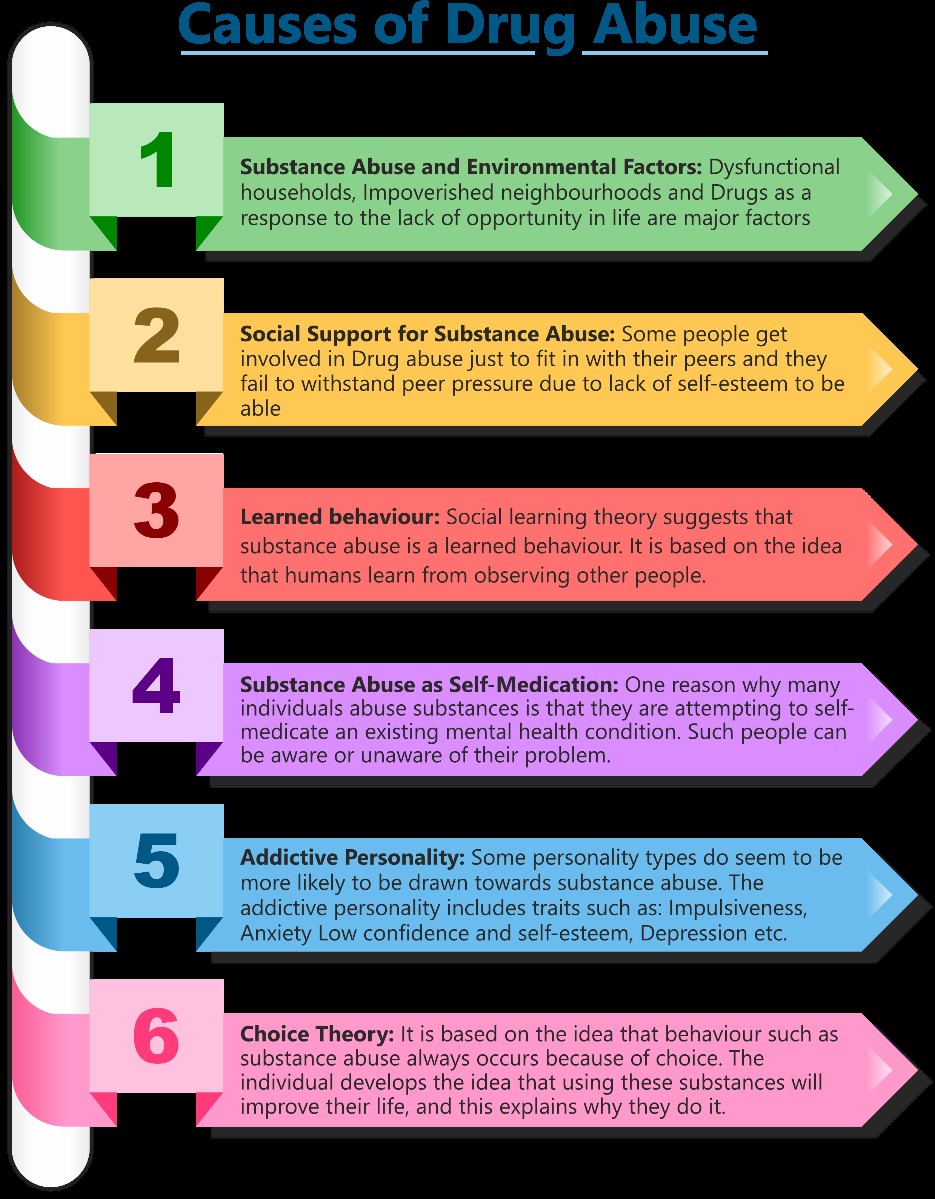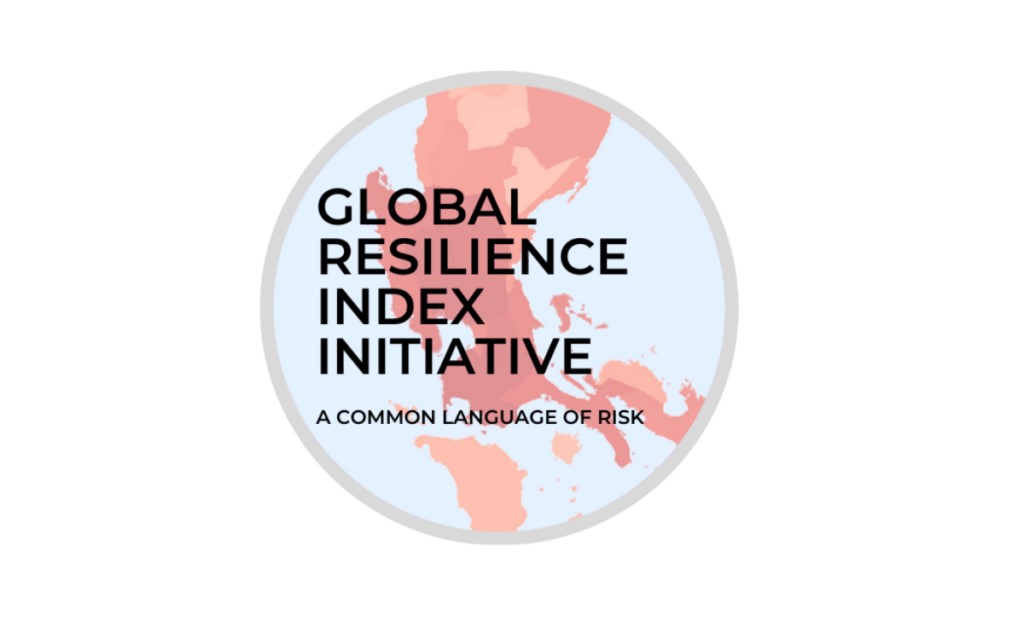Wednesday, 17th November 2021
Extension of CBI and ED Directors
In News
The Central government has brought an ordinance to extend the tenure of Enforcement Directorate (ED) and Central Bureau of Investigation (CBI) directors up to 5 years.
About the News
- The ordinance amended the Delhi Police Special Establishment (DPSE) Act and the Central Vigilance Act (CVC) to extend the tenure of Central Bureau of Investigation (CBI) and the Enforcement Directorate (ED) chiefs up to five years.
- The extension includes the fixed two year terms for the directors. The Union government may extend his or her tenure by a year for three consecutive years.
- At present, the director of CBI and ED have been appointed for two years tenure in the office.
Appointment of CBI and ED Director
- CBI Director is appointed by the Central Government on the recommendation of the Prime Minister, leader of the single largest Opposition party and the Chief Justice of India (or a Supreme Court judge nominated by CJI (Chief Justice of India)).
- The appointment for the ED director post is done on the recommendation of a committee consisting of the chairperson of the Central Vigilance Commission, the Home Secretary, Revenue Secretary, Vigilance Commissioners and the Secretary of the Department of Personnel and Training.
- By extending the ED director’s tenure through an ordinance, the Union government has bypassed this committee.
Need for longer tenure
- Need time to make lasting impact: A two-year tenure for a CBI head is too short for any officer to make a lasting impact on the organization.
- Global example: The Federal Bureau of Investigation chief in the U.S. gets a 10-year term which sometimes impinges on the longevity and stability of a democratically elected government.
Concern raises against the extension of Tenure
- Straight five-year term has not been given. At the end of the mandatory two-year tenure, the Union government may extend his or her tenure by a year for three consecutive years.
- The rule about three annual extensions can be misused by a tendentious government. It may be construed as a reward for ‘good behaviour’, which is a euphemism for an obliging Director.
- Some see this ordinance as against the crux of Prakash Singh judgment, which asked for ‘fixed tenure’ for Police Chief.
- The development comes two months after the Supreme Court ruled that extensions beyond the date of superannuation of an individual should be rare, in exceptional cases only.
Source:
Space Debris - Edukemy Current Affairs
In News
The Russian military conducted an anti-satellite test (ASAT) recently, shooting down one of its own satellites in low Earth orbit.
About the News
- Kosmos 1408, a defunct Soviet-era satellite orbiting just above the International Space Station at 480km was blown up by Russian Military, for conducting ASAT.
- Anti-satellite tests are considered a form of military technology, equipped to shoot down intelligence satellites, and their use is not covered by international laws
- More than 1,500 large pieces of trackable debris were generated from the explosion of the satellite, as well as potentially hundreds or thousands of untrackable smaller pieces.
Causes of Concerns Raised by this Test
- Astronauts put in Danger
- The satellite destroyed in an orbit just above the ISS at 480km, putting the astronauts and cosmonauts stationed there in danger.
- Chinese taikonauts at the country’s under-construction space station Tiangong-3 were also put in danger.
- Future Risks: The space station continues to be at risk of impact from objects too small to be tracked as it orbits 220 nautical miles above the Earth. These tiny objects could be pieces of rock, micrometeorites, dust particles or even flecks of paint that chip off of satellites.
- Show of Military Might, disturbing regional peace: The Test follows closely on the heels of increased tensions between the US and Russia, after US officials publicly warning Europe about Russia’s increasing military presence at Ukraine’s borders.
About ASAT Tests
- Since the end of the Cold War, this is the fourth ASAT test conducted in space by any country with missiles launched from Earth.
- The Legal Status of Anti-Satellite Tests: The Outer Space Treaty of 1967 states that all space activities are to be guided by the principle of cooperation and mutual assistance, with regard to interests of all parties of the treaty.
- The treaty also forbids weapons of mass destruction and nuclear warheads in outer space, but does not explicitly prohibit conventional weaponry.
- Hence, it is a matter of contention whether ASAT tests violate the Outer Space Treaty of 1967.
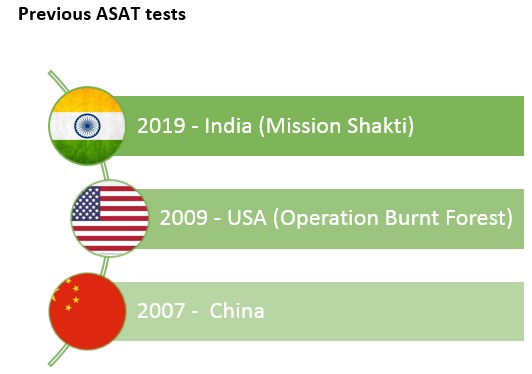
About Space Debris
- Space debris, or space junk, consists of discarded launch vehicles or parts of a spacecraft that float around in space hundreds of miles above the Earth, risking collision with a satellites or a space station.
- Debris can also be caused by an explosion in space or when countries conduct missile tests to destroy their own satellites by missiles. Apart from Russia, China, the United States and India have shot down satellites, creating space debris.
- As space debris orbits around the earth at tremendous speeds - about 15,700 miles per hour (25,265 kph) in low Earth orbit - it could cause significant damage to a satellite or a spacecraft in case of a collision.
- While space debris is unlikely to affect space travel, it will lead to significant problems for spaceflight around Earth. The risk would be highest for objects orbiting at an altitude of around 1,000 kilometres (620 miles), which is used for communications and Earth observation.
Sources:
Laws and regulations regarding eating, selling and displaying meat
In News
The civic bodies in Vadodara, Rajkot, Bhavnagar and Junagadh in Gujarat have recently ordered roadside food vendors and hawkers to cover non-vegetarian food, including eggs, stating its open display could “hurt religious sentiments”.
About the News
- The roadside vendors have been asked to either stop selling non-vegetarian food items or keep them covered so that people cannot see them while passing on the roads or walking on footpaths.
- A similar order was passed in UP banning the sale of meat in certain parts of Mathura, adding to the ban orders that are already in force in parts of Haridwar, Rishikesh, Vrindavan, Ayodhya etc.
- The Uttarakhand government had also recently inserted a new provision in the municipal laws to give itself the power to declare an area under a municipal corporation, council or Nagar panchayat as a “slaughter-free” zone to impose a total ban on slaughterhouses.
This touches upon the rights of a large number of people, their livelihoods and their right to eat the food of their choice. From the legal standpoint, the prohibitory executive may also have an impact on some of the fundamental rights and duties in conjunction with the Directive Principles of State Policy (DPSP), as delineated under the Constitution of India.
Relevant constitutional provisions
- Article 19: Under Article 19(1) (g) of the Constitution, citizens have the right to choose employment, take up any trade or occupation as per their free will. But this right is not absolute. The State can impose reasonable restrictions upon the freedom of trade, business, occupation or profession in the interest of the general public under Article 19(6) and every ban order restricting or prohibiting any person against carrying a lawful trade or business must pass the test of this article.
- In Chintaman Rao vs State of Madhya Pradesh (1950), the Supreme Court ruled that what constitutes a reasonable restriction is subject to supervision by the courts. (The same applies to the current prohibitory )
- Article 48: The article under the DPSP (a guidance for states in framing laws) which states that the State shall organise agriculture and animal husbandry on modern and scientific lines, take steps for preserving and improving breeds, also prohibits the slaughter of cows and calves.
- Article 51: Article 51A (g) underlines that it is the duty of every citizen to protect and improve the natural environment that include forests, lakes, rivers and wildlife and also to have compassion for living creatures.
The Apex Court’s Interpretation on application of above
- On grounds of Reasonable Restriction: Regarding the prohibition of eggs by the Rishikesh Municipal Board, while the hotel owners considered it violation of their right to freely practice trade or business under Article 19(1)(g), the Allahabad high court held it to be a form of reasonable restriction covered under Article 19(6).
- On grounds of Fundamental Duty: Supreme Court in Om Prakash & Others vs State of Uttar Pradesh stated that the fundamental duties enjoined on citizens should guide the legislative and executive actions of elected or non-elected institutions.
- On Grounds of Fundamental Right: The nine-judge bench that declared privacy to be a fundamental right in 2017 made it clear that decisional autonomy, with the choice of what one eats, is an integral part of their right to privacy included in Article 21 of the Constitution. Therefore, any action by the State that results in an infringement of the right to privacy will be subject to judicial review.
Source:
Sustainable Transport
In News
The second United Nations Global Sustainable Transport Conference was held on 14-16 October 2021, at Beijing, China.
About the News
- The Second UN Global Sustainable Transport concluded with the Beijing Statement, which called for adopting integrated, interdisciplinary, and cross-sectoral approaches, supported by greater international cooperation.
- The Conference participants agreed that without a profound shift to sustainable mobility, achieving the goals of the Paris Climate Agreement and the Sustainable Development Goals — already off-track — would be impossible.
- UN Secretary-General specifically called for phasing out the production of internal combustion engine vehicles by 2035 for leading manufacturing countries, and by 2040 for developing countries.
What is Sustainable Transport?
- Meaning: Sustainable transport refers to the broad subject of transport that is or approaches being sustainable. It includes vehicles, energy, infrastructure, roads, railways, airways, waterways, canals, pipelines, and terminals.
- Transport operations and logistics as well as transit-oriented development are involved.
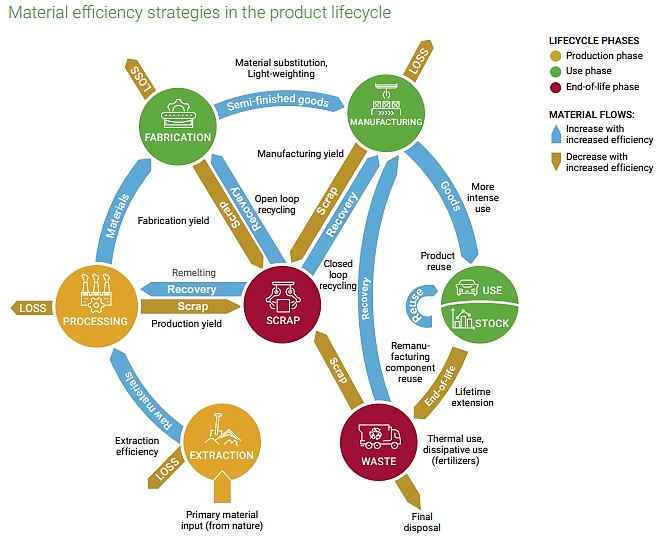
Need for Sustainable Transport
- Transport sector and Carbon Footprint: Transport is at the center of many economic and social development challenges, accounting for about 64% of global oil consumption, 27% of all energy use, and 23% of the world’s energy-related carbon dioxide emissions.
- Sustainability for Economic Gains: According to the World Bank, a transition to sustainable mobility could deliver savings of US$70 trillion by 2050, when considering full transport costs. Better access to roads could help Africa become self-sufficient in food and create a regional food market worth $1 trillion by 2030.
- Resilience to climate change and extreme weather events: Global initiatives such as the Sendai Framework for Disaster Risk Reduction (2015) note the importance of promoting the resilience of new and existing critical infrastructure, including transport infrastructure, to ensure that it remains safe, effective, and operational during and after disasters to provide life-saving and essential services.
- Sustainable Transport and SDGs: Some SDGs are directly connected to sustainable transport through targets and indicators, such as SDG 3.6 on road safety, SDG 9.1 on infrastructure, and SDG 11.2 on providing access to safe, affordable, accessible, and sustainable transport systems for all and expanding public transport
- Serves Socio-Economic Needs: A lack of access to roads and transport contributes to deprivation in terms of access to timely health care, education, jobs and markets for agricultural produce.
Over 1 billion people worldwide still lack adequate access to an all-weather road, especially in developing countries, including countries in special situations. Sustainable transport is, thus, crucial for regional development, linking countries to regional and global markets, promoting trade opportunities, and stimulating economic growth.
What are the challenges in bringing Sustainability in the Transport Sector?
- The Unequal Transition: The transition to sustainable transport in some places risks leaving many other countries and vulnerable communities behind. To ensure sustainable transport benefits everyone would require investments in technology and innovation, especially for developing countries.
- It could also threaten the provision of low-cost mass transit which remains crucial for essential workers and those unable to work remotely.
- Lack of Financial and Technological Resources: Developing countries may lack strong institutions, sufficient financial and human resources, and the specialized expertise needed not only to develop and effectively deploy sustainable transport systems but also to implement them in a coherent way along with other elements, such as urban and land planning and intermodal transport connectivity, including air transport and logistics. This can hamper countries' own development as well as that of the region.
- Estimations Issues: Aggregated and comprehensive estimates of the financing needs for sustainable transport are not available. Governments should also adopt appropriate accountability measures and prepare a pool of bankable projects.
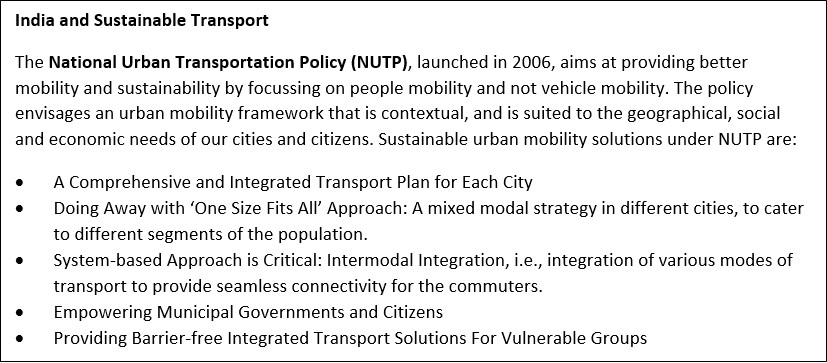
Way Forward
- Establishing Co-operation: National actions must be supported by the international community through the necessary means of implementation in line with the 2030 Agenda, the Addis Ababa Action Agenda, the UNFCCC mechanisms, and other relevant agreements, including the SIDS Accelerated Modalities of Action (SAMOA) Pathway and the Vienna Programme of Action (VPoA).
- Finances: Bilateral, multilateral, and multi-stakeholder partnerships and initiatives remain essential to support the sustainable transport transformation in all countries, including countries in special situations, and should be enhanced. Public-private partnerships can attract investments and technologies to under-served areas.
- Innovation and technology: Built-in safety features, environmentally friendly fuels and engines, widespread digitalization, apps that process real time information, autonomous vehicles and intelligent transport systems have become central features of the transport innovation landscape.
- Behavioural Changes: Motivating consumers towards adopting more sustainable mobility patterns and choices will be crucial going forward.
- Avoid–Shift–Improve approach: Avoid reduces transport demand, Shift changes the nature of transport demand and supply by transitioning away from fossil fuel–heavy modes and Improve refers to changes in how transport systems and services are provided or managed.
Question: Discuss the need for developing Sustainable Transport Systems.
Sources:
- Sustainable Transport Conference calls for vastly accelerated action to achieve net zero emissions and build a green, inclusive and equitable future
- Press_Release_Sustainable_Transport_Conference.pdf
- Beijing Statement of the Second United Nations Global Sustainable Transport Conference
- Transportation Report 2021_FullReport_Digital.pdf
This Day in History - ‘Punjab Kesari’
On November 17, 1928 Lala Lajpat Rai breathed his last owing to the injuries he sustained during the protest against 'Simon Commission'. His death infuriated the young freedom fighters like Bhagat Singh, who tried avenging his death by attempting to kill the superintendent of police James A. Scott, who had ordered the lathi charge. Commonly known as "Punjab Kesari" and "Sher-e-Punjab", he was born in Punjab, on January 28, 1865. He was an outspoken supporter of Hinduism and its beliefs and was motivated to help the country in its fight for independence. In 1881, he joined the Indian National Congress at 16, and in 1885 established the Dayanand Anglo-Vedic School in Lahore. Rai was elected President of the Indian National Congress during its Special Session in Kolkata in 1920, which saw the launch of Mahatma Gandhi’s Non-cooperation Movement. Apart from founding the Arya Gazaette as its editor, he also authored several books like ‘The Story of My Deportation’, ‘United States of America: A Hindu's Impression’ and ‘England's Debt to India’. In 1928, he introduced the legislative assembly resolution for the boycott of the British Simon Commission on constitutional reform.

Sources:
Image of the Day - Stratovolcano
This is image of Nevado del Ruiz , a volcano that destroyed an entire town in Colombia with the death of some 25,000 people, spewed ash and gas this weekend on the 36th anniversary of that devastating eruption. It is a stratovolcano composed of many layers of lava alternating with hardened volcanic ash and other pyroclastic rocks (tephra). Stratovolcanoes are sometimes called "composite volcanoes" because of their composite stratified structure built up from sequential outpourings of erupted materials. They are among the most common types of volcanoes on earth. Stratovolcanoes are common at subduction zones, forming chains and clusters along plate tectonic boundaries where oceanic crust is drawn under continental crust or another oceanic plate.
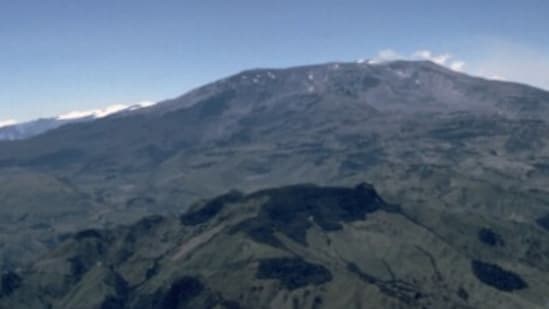
Source:
‘E-Amrit’ portal
- Context: India recently launched ‘E-Amrit’, a web portal on electric vehicles (EVs), at the COP26 Summit in Glasgow, UK.
- E-Amrit is a one-stop destination for all information on electric vehicles—busting myths around the adoption of EVs, their purchase, investment opportunities, policies, subsidies, etc.
- The portal has been developed and hosted by NITI Aayog under a collaborative knowledge exchange programme with the UK government and as part of the UK–India Joint Roadmap 2030, signed by the Prime Ministers of the two countries.
- E-Amrit intends to complement initiatives of the government on raising awareness on EVs and sensitizing consumers on the benefits of switching to electric vehicles.
- In the recent past, India has taken many initiatives to accelerate the decarbonisation of transport and adoption of electric mobility in the country. Schemes such as FAME and PLI are especially important in creating an ecosystem for the early adoption of EVs.
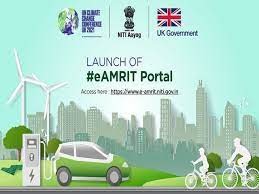
Sources:
Rani Kamlapati
- Context: The name of Bhopal’s Habibganj railway station has been changed to Rani Kamlapati station.
- Rani Kamlapati, the “last Hindu queen of Bhopal” was the widow of Nizam Shah, the ruler of Gond dynasty (Gonds are one of the largest tribal communities in India, spread across Madhya Pradesh, Maharashtra, Chhattisgarh, Andhra Pradesh, Telangana, Bihar and Odisha) that ruled the then Ginnorgarh, 55 km from Bhopal, in the 18th century.
- Nizam Shah had built the famous seven-storeyed Kamlapati Palace in her name in Bhopal.
- She is known to have shown great bravery in facing aggressors during her reign after her husband was killed and is believed to have done great work in the area of water management and set up parks and temples.
- The state governments send the request for change of name to the Ministry of Home Affairs, the nodal ministry for these matters, which then accords its approval, keeping the Ministry of Railways in the loop.
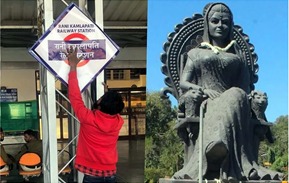
Source:
- Habibganj to Rani Kamlapati: How a railway station’s name is changed
- Indian Railways redeveloped Habibganj to become Rani Kamlapati station; know how station name is changed
Image Source:
Landraces
- Context: Rahibai Popere, popularly known as Seedmother, from Maharashtra has been awarded Padma Shri in recognition of her work that to save hundreds of landraces.
- Landraces refer to naturally occurring variants of commonly cultivated crops.
- They are dynamic populations with a historical origin, distinct identity, often genetically diverse and locally adapted, and associated with a set of farmers’ practices of seed selection and field management as well as with a farmers’ knowledge base.
- These are as opposed to commercially grown crops, which are developed by selective breeding (hybrids) or through genetic engineering to express a certain trait over others.
- These local crops show low to moderate edible yield but are often highly nutritious.
- They are used in plant breeding to pass on the traits of more efficient nutrient uptake and utilization, as well as useful genes for adaptation to stressful environments such as water stress, salinity and high temperatures.

Source:
- Explained: In age of hybrid crops, the importance of preserving landraces
- Landraces and Crop Genetic Improvement
Image Source:
41st scientific expedition to Antarctica
- Context: India has launched the 41st scientific expedition to Antarctica
- The Indian Antarctic program, which began in 1981, has completed 40 scientific expeditions, and built three permanent research base stations in Antarctica, named DakshinGangotri (1983), Maitri (1988) and Bharati (2012).
- As of today, Maitri and Bharati are fully operational.
- The 41st expedition has two major programs:
- The first program encompasses geological exploration of the Amery ice shelf at Bharati station. This will help explore the link between India and Antarctica in the past.
- The second program involves reconnaissance surveys and preparatory work for drilling of 500 meters of ice core near Maitri. It will help in improving the understanding of Antarctic climate, westerly winds, sea-ice and greenhouse gases from a single climate archive for past 10,000 years.
- The National Centre for Polar and Ocean Research (NCPOR), Goa—an autonomous institute under the ministry of Earth Sciences manages the entire Indian Antarctic program.
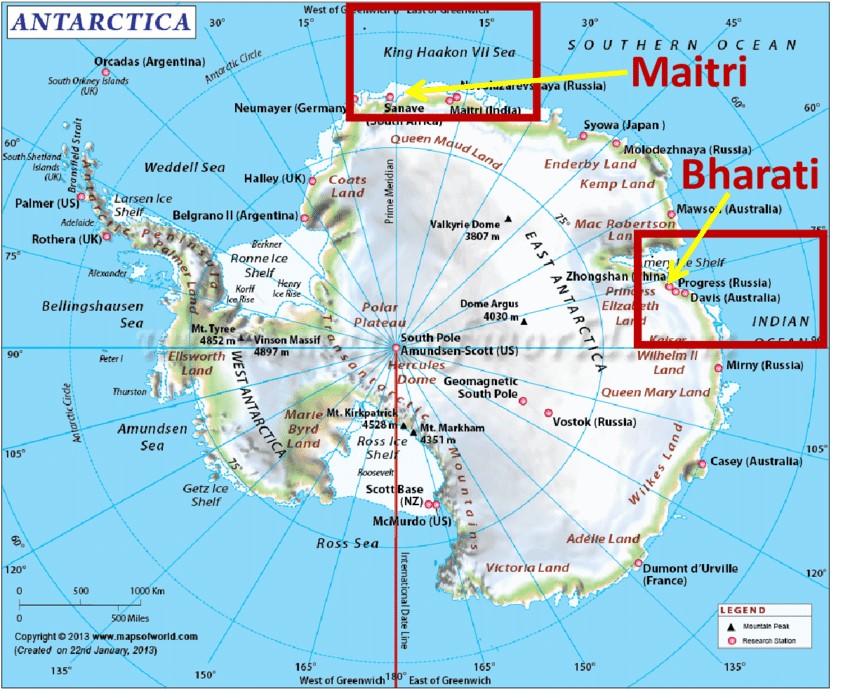
Source:
- India launches 41st scientific expedition to Antarctica. All you need to know
- India’s research spree in Antarctica: 41st scientific expedition successfully launched
Image Source:
Our economic recovery requires a broader base: LM
Essence: The Article highlights that India’s economy must improve on many more counts before it can regain the broad vigor it needs. There are many indicators that depict optimistic scenario, like an upward trend in exports with improvement in GST collections, along with increase in manufacturing orders showing expansion. But how long the recovery will sustain is still debated as many of the parameters are still not performing up to the mark. Indicators like score on RBI’s consumer price index along with education snap off among the poor shows that the disparity has widened further.
The need of the hour is fiscal correctives without which fragility of K shaped rebound will get exposed leading to the widening of disparities in the economy.
Why you should read this article?
- To understand the indicators that are indicating a durable recovery to take shape.
- To understand how K shaped recovery leads to widening of disparities.
Source:
There’s a need for transparency in transfer of judges: IE
Essence: The article talks about the need for transparency in transfer of judges from one state to another. It Article 222 which ensures judicial independence in the case of transfer by providing for consultation with Chief Justice of India. As the judges speak through their decisions, the transfers where the reason is not clear leads to a speculation of ‘inconvenient’ judges getting transferred.
The article invokes the thought that the transfers which are done in the name of public interest should provide the right to the public to know the reasons for it. As per Justice P N Bhagwati the language of Article 222 should be interpreted in a manner which involves consent of the judge proposed to be transferred also. Because this is what will uphold the basic structure doctrine and preserve its independence at all cost.
Why you should read this article?
- To get insights into how judges of a High Courts are transferred.
- To understand why it is necessary to maintain the transparency and fairness while the decision for transfer is made.
Source:
Business as usual won’t work for post pandemic times: livemint
Essence: Pandemic has raised two specific challenges for the world today- Vaccination and Economic recovery. Both poor Countries and developing nations need out of box solutions to overcome these challenges. It is important to highlight that these changes have to take place in the scenario of changing nature of market place-post covid.
Mass adoption of digital tools and dominance of e- commerce are two important elements of the present-day world. But there are multidimensional problems too. Firstly, the regulating authorities have a difficult task to enforce competition rules for level playing competition. Secondly, an unfair advantage to the big players vis-a-vis the small players in the market. Thirdly, reduction or even shutting down of conventional small businesses. Further inequalities in income are also caused by the rising unemployment. What is needed to overcome all such problems are innovative solutions.
Why should you read this article?
- How have global disparities and changing nature of market place affected the world economy?
- What are the problems which have emerged due to the developments of changing market scenario- post covid?
Source:
Solar Energy for Coastal India
Background
- Solar energy is becoming one of the dominant source in rural electrification process.
- When the coastal town of Thoothukudi, Tamil Nadu was assuming what electricity meant, M Sakthivel installed five street lamps with the help of solar installation.
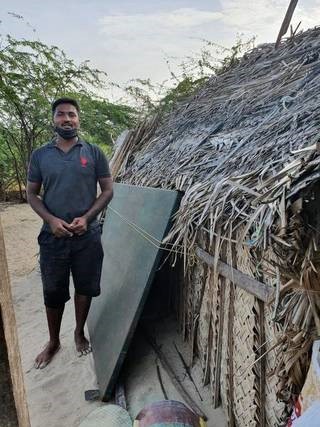
Solar Energy as an alternative
- M Sakthivel runs affordable domestic electrification projects that use solar energy panels to lighten up the village.
- He has invested his earnings from his YouTube channel to install nine domestic solar power units in his colony
- Also, a boat-making company in Kerala is innovating into small solar fishing vessels.
- Solar energy driven boats will provide a sustainable alternative to the current ones that run on petrol and kerosene guzzling outboard engines.
- These projects have become a means of empowerment among rural and remote communities.
Quote: Replacing traditional sources of energy completely with renewable energy is going to be a challenging task. However, by adding renewable energy to the grid and gradually increasing its contribution, we can realistically expect a future that is powered completely by green energy.- Tulsi Tanti
Source:
Share the article
Get Latest Updates on Offers, Event dates, and free Mentorship sessions.

Get in touch with our Expert Academic Counsellors 👋
FAQs
UPSC Daily Current Affairs focuses on learning current events on a daily basis. An aspirant needs to study regular and updated information about current events, news, and relevant topics that are important for UPSC aspirants. It covers national and international affairs, government policies, socio-economic issues, science and technology advancements, and more.
UPSC Daily Current Affairs provides aspirants with a concise and comprehensive overview of the latest happenings and developments across various fields. It helps aspirants stay updated with current affairs and provides them with valuable insights and analysis, which are essential for answering questions in the UPSC examinations. It enhances their knowledge, analytical skills, and ability to connect current affairs with the UPSC syllabus.
UPSC Daily Current Affairs covers a wide range of topics, including politics, economics, science and technology, environment, social issues, governance, international relations, and more. It offers news summaries, in-depth analyses, editorials, opinion pieces, and relevant study materials. It also provides practice questions and quizzes to help aspirants test their understanding of current affairs.
Edukemy's UPSC Daily Current Affairs can be accessed through:
- UPSC Daily Current Affairs can be accessed through Current Affairs tab at the top of the Main Page of Edukemy.
- Edukemy Mobile app: The Daily Current Affairs can also be access through Edukemy Mobile App.
- Social media: Follow Edukemy’s official social media accounts or pages that provide UPSC Daily Current Affairs updates, including Facebook, Twitter, or Telegram channels.


